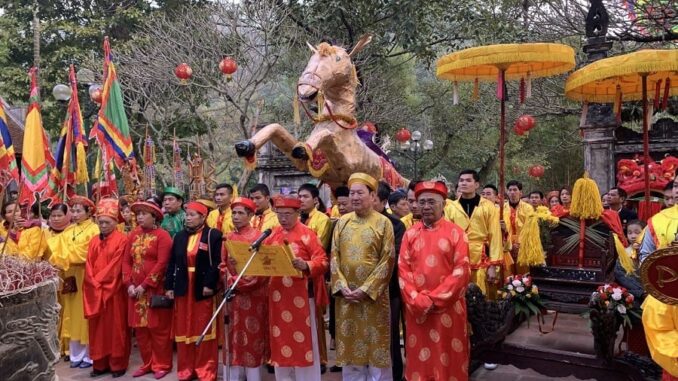
Giong Festival is one of the cultural beauties, a festival held annually in many places in the Hanoi area. This is the day when people express their respect, commemorate, and praise Saint Giong – the legendary hero of the nation.
Currently, there are two typical Giong Festivals in Hanoi: the Giong Festival held at Soc Temple in Phu Linh commune, Soc Son district, and the Giong Phu Dong festival held at Phu Dong Temple, Gia Lam district.
Besides, in Hanoi, many localities organize Giong Festivals, such as Thong Nhat Commune, Thuong Tin district; Phu Lo Doai Village, Soc Son district, Dong Do, Dong Anh district, etc.
What makes Giong Festival stand out globally is because of the cultural values that have been preserved and passed down through many generations. Although the festival is held in the capital – close to the modern urban center, Giong Festival still exists over time independently and sustainably, preserving traditional beauty without commercializing.
The meaning of the festival
This is a traditional festival that vividly and realistically simulates the battles of Thanh Giong and the people of Van Lang in the battle against the An invaders. This is also a festival to raise community awareness of ancient forms of war, recalling the will and united strength of the entire people in the cause of national liberation.
In addition, the Giong Festival also has great significance in educating patriotism and national pride in each person.
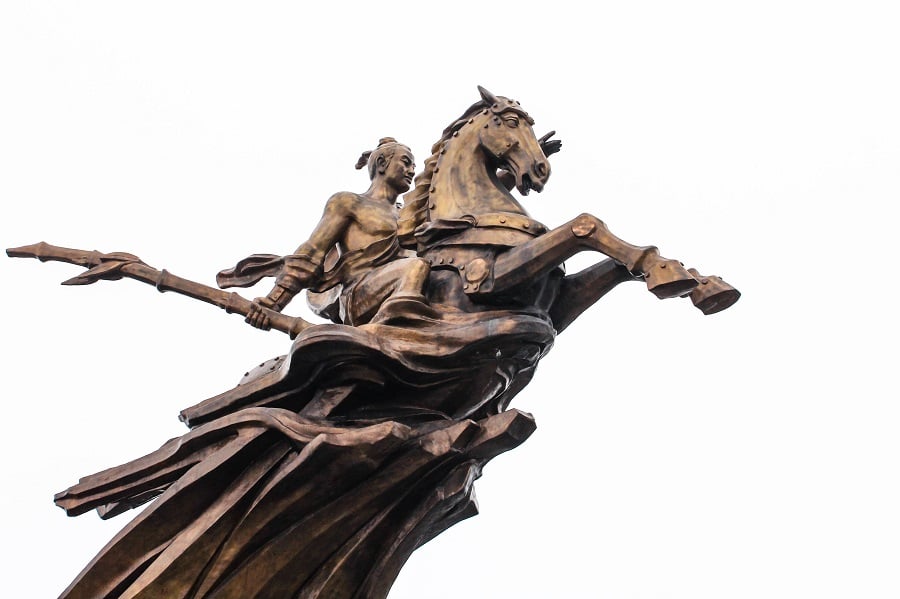
Giong festival in Phu Dong Temple
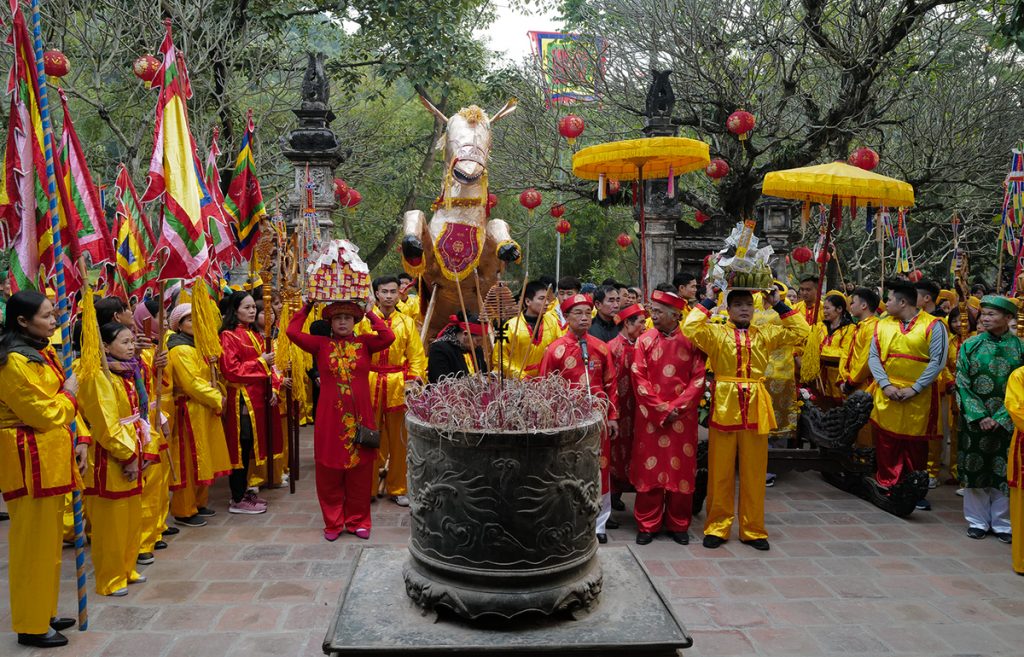
– Address: Phu Dong temple, Phu Dong commune, Gia Lam district, Hanoi
– Time: From April 7 to April 9 of the lunar calendar every year
The Giong Festival at Phu Dong Temple is held annually from the 6th to the 12th days of the 4th lunar month, the main festival day is on the 9th day. The festival is normative in many aspects, such as legend, sense of organization, and art performance, especially with the participation of over a thousand people.
Giong festival in Soc Temple
– Address: Soc Temple special national relic site, Soc Son, Hanoi
– Time: 3 days from January 6 to January 8 every year
Giong Festival at Soc Temple is held annually from the 6th to the 8th days of the 1st lunar month. The main festival day is on the 7th day, with all traditional rituals such as the procession ceremony, the incense offering ceremony, and the ritual of bathing the saint’s statue.
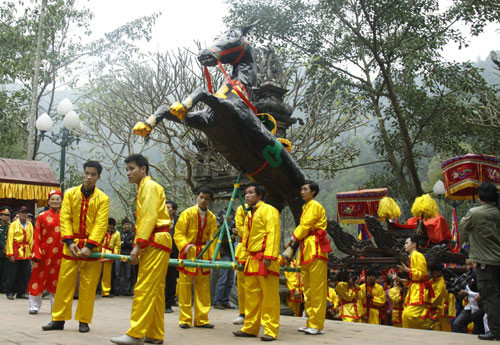
Activities within the festival are performed uniquely, imbued with Vietnamese culture. Therefore, up to now, the values of Giong Festival are still preserved intact, making it one of the proud traditional beauties of the nation.
The artistic and cultural value of Giong Festival
The outstanding value of Giong Festival is a cultural activity preserved and handed down continuously from generation to generation. Initially, Giong Festival was only a village festival, but since King Ly Thai To (1009 – 1028) chose Thang Long as the capital, Giong Festival was held methodically, on a large scale, with rites bolding court feudalism. Despite the historical volatility, Giong Festival still exists in-dependently and sustainably, as well as preserving relatively intact core values. Giong Festival has the role of associating the community by using images of a national hero or a legendary Saint to associate villages and communicate with each other. The participation of the community in the festival shows passion and a sense of conservation, preservation, and promotion of the unique values of the age-old festival.
Especially in Gia Lam and Soc Son, the local people have a high sense of preserving ancient documents about regulations for organizing Giong Festival. Typically, the epitaphs record the sacrifice offerings that must be presented in the festival. There are bamboo flower gio, models of voi tran (elephant), nga voi (elephant’s tusk), co voi (elephant grass), trai cau (betel and areca) at Bia Mountain (Soc Son), and tasks of preparing sacrifice rites for each village. The regulations are always observed voluntarily by the people in the villages.
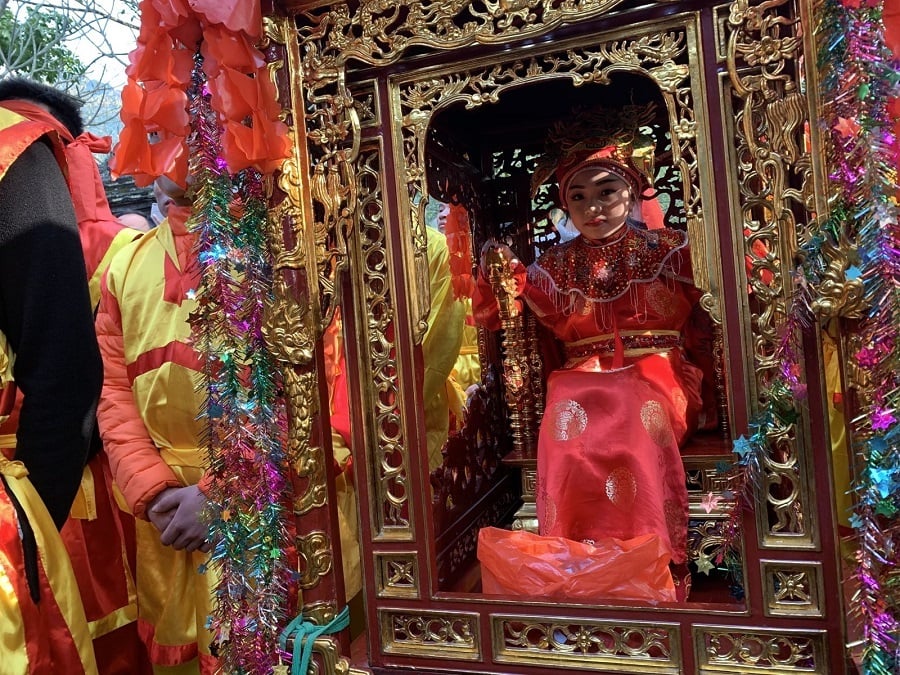
This is also evidence of elements of people for the festival – which UNESCO always requires in intangible cultural heritage title registration dossier.
Just like Soc Son, Phu Dong villagers (Gia Lam) still keep so hoi le (a notebook of village’s festival regulations) which states regulations to organize the festival such as the time, the steps to practice; explain the meaning, part of roles In the festival (Masters, Red Shirt village, Black Shirt village, Ai Lao Guild…), accompanied by strict regulations of costume, age, rituals way.
About art value, Giong Festival brings many unique beauties expressed in pro-cessions, flags, drums, folk performances, tiger dance, etc.
Conclusion
On November 16, 2010, in Nairobi city – the capital of Kenya, UNESCO recognized the Giong festival at Phu Dong temple in Gia Lam district, and the Giong festival at Soc in Soc Son district, which is a representative intangible cultural heritage of humanity and one of the unique and vivid memorials of Saint Giong. That further emphasizes the spirit of “keeping alive” the country’s ancient festivals, arts, and culture of the capital Hanoi.
Giong Festival is held in many localities with diverse and unique activities, expressing the unique culture of each region. However, overall, this festival still brings the beauty of national pride and the spirit of solidarity against enemies, evokes patriotism in every citizen, and remembers the gratitude of the hero Thanh Giong.
Get an opportunity to visit Intangible World Cultural Heritage in Vietnam through Vietnam E-Visa!